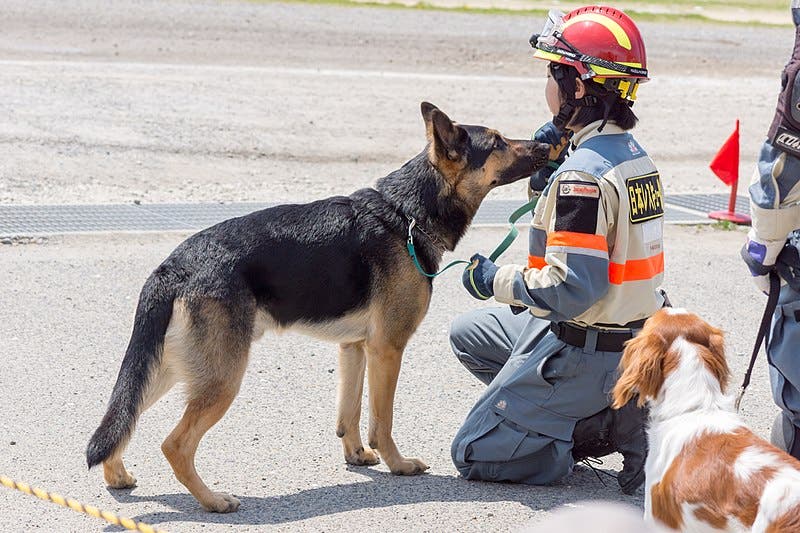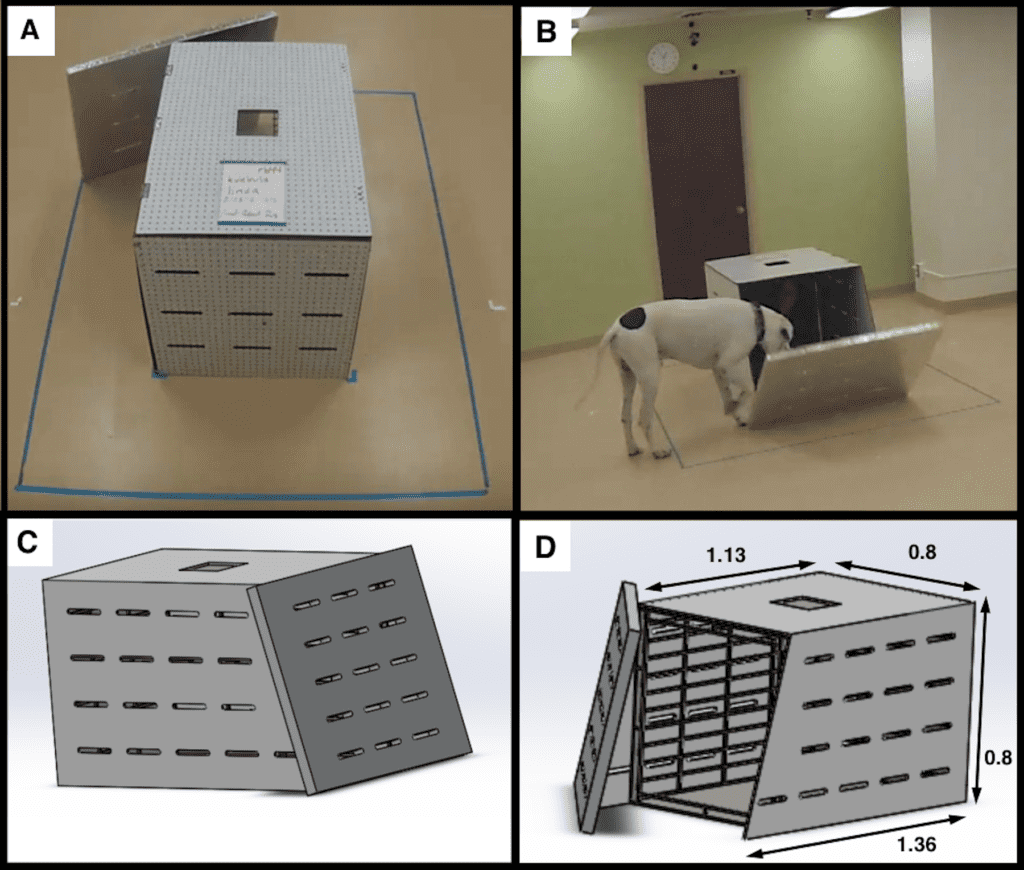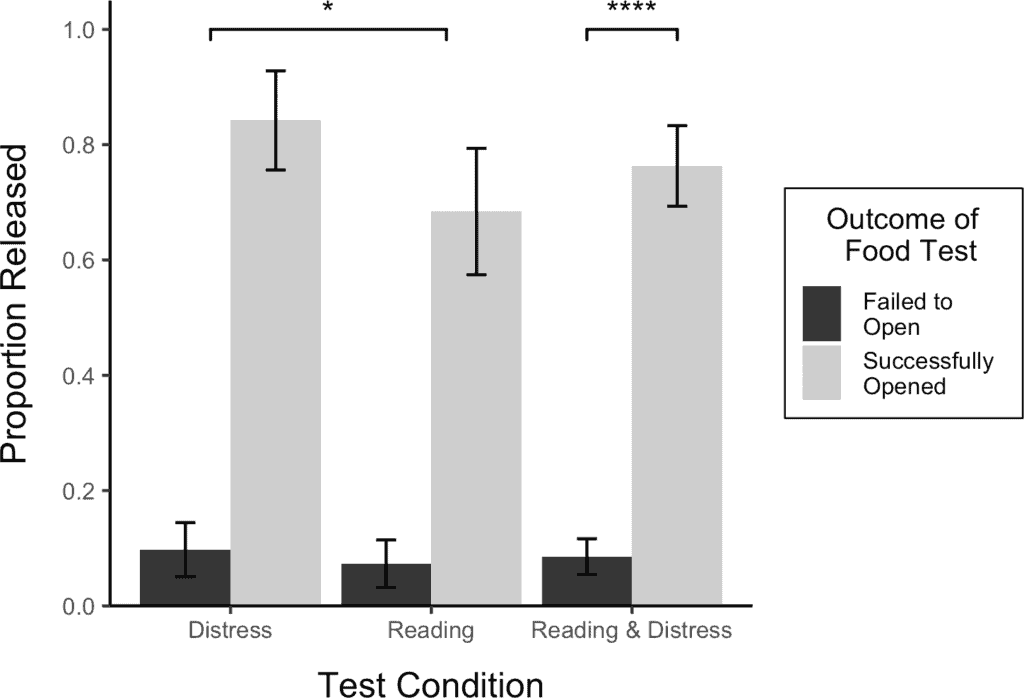
From the fictional adventures of Lassie to Disney’s Bolt, there’s no shortage in popular culture of canines ready to leap into the fiery bellies of hell itself at a moment’s notice, if that means rescuing a human.
While everybody can recognize that dogs are extremely attached to their owners, how eager are they really to engage in rescuing behavior?
This was the subject of a recent scientific inquiry performed by Joshua Van Bourg, a graduate student at Arizona State University’s Department of Psychology, and Clive Wynne, who is a professor of psychology at Arizona State University.
The pair of researchers devised a series of clever tests meant to assess how responsive dogs are to cries for help, as well as to distinguish genuine rescuing behavior from other motivations. After all, in Van Bourg’s own words, “the difficult challenge is figuring out why they do it.”
Van Bourg and Wynne worked with 60 pet dogs and their owners, who had to feign distress by calling out “help” or “help me” while sitting inside a large box. A small door light enough to be pushed aside by a dog was fitted to one side of the box. None of the dogs had any training beforehand.
Each owner was coached on how to sound more authentic when calling out for help. They also had to refrain from calling their pet dogs by their name. Shouting a dog’s name would only be evidence of obedience, rather than rescuing behavior.

Overall, one-third of the dogs opened the light-weight door to rescue their owners, which may not sound impressive at face value. In fact, it might even appear as some dogs are cruel — are two-thirds of the humans not worth saving? However, these results turned out to be very encouraging in light of the outcomes of the control tests.
A dog’s ability to rescue their owners hinges on their motivation to help, as well as on how well they understand what is actually needed to provide rescuing.
In one subsequent test, the dogs watched as one of the researchers dropped food in the same box where their owners cried for help. Only 19 of the 60 dogs (32%) opened the box, roughly the same as the number of dogs who rescued their owners. In other words, rescuing seems at least as appealing as a tasty treat, and we all know how much canines enjoy food.
“The key here is that without controlling for each dog’s understanding of how to open the box, the proportion of dogs who rescued their owners greatly underestimates the proportion of dogs who wanted to rescue their owners,” Van Bourg said.
“The fact that two-thirds of the dogs didn’t even open the box for food is a pretty strong indication that rescuing requires more than just motivation, there’s something else involved, and that’s the ability component,” Van Bourg said. “If you look at only those 19 dogs that showed us they were able to open the door in the food test, 84% of them rescued their owners. So, most dogs want to rescue you, but they need to know how.”

In yet another test, the researchers investigated what would happen when the owners sat in the box while calmly reading aloud from a magazine. Four fewer dogs opened the box than during the distress test, the authors wrote in the journal PLOS ONE. This suggests the dogs genuinely responded to the distress of their owners, rather than simply wanting to be physically near their owners.
“A lot of the time it isn’t necessarily about rescuing,” Van Bourg said. “But that doesn’t take anything away from how special dogs really are. Most dogs would run into a burning building just because they can’t stand to be apart from their owners. How sweet is that? And if they know you’re in distress, well, that just ups the ante.”
Further hints of genuine rescuing motivations were provided by analyses of the canine’s behavior. When their owners cried for help, the dogs were visibly stressed, barking and whining more.
Furthermore, the dogs were just as stressed during their second and third attempts to open the door to the box during the distress test. In contrast, dogs acted less stressed during subsequent exposures to the reading test, showing that they became acclimated.
“Something about the owner’s distress counteracts this acclimation. There’s something about the owner calling for help that makes the dogs not get calmer with repeated exposure,” said Ban Bourg in a press release.
These findings suggest dogs rescuing their owners is an empathetically-motivated prosocial behavior. As such, studies such as these may also help shed light on “the mechanisms shaping the evolution of prosocial behavior as domestication and selective breeding may have favored hypersocial tendencies in dogs,” the researchers wrote in their study.
It’s worth mentioning that this isn’t the first study to support dogs’ prosocial tendencies towards humans or canine emotional contagion. Previously, researchers found that dogs were less likely to approach a person humming a song than a person feigning a distressed state by pretending to cry. There is also evidence that dogs and their owners can synchronize their emotions.
“What’s fascinating about this study,” Wynne said, “is that it shows that dogs really care about their people. Even without training, many dogs will try and rescue people who appear to be in distress — and when they fail, we can still see how upset they are. The results from the control tests indicate that dogs who fail to rescue their people are unable to understand what to do — it’s not that they don’t care about their people.
“Next, we want to explore whether the dogs that rescue do so to get close to their people, or whether they would still open the box even if that did not give them the opportunity to come together with their humans,” Wynne added.


